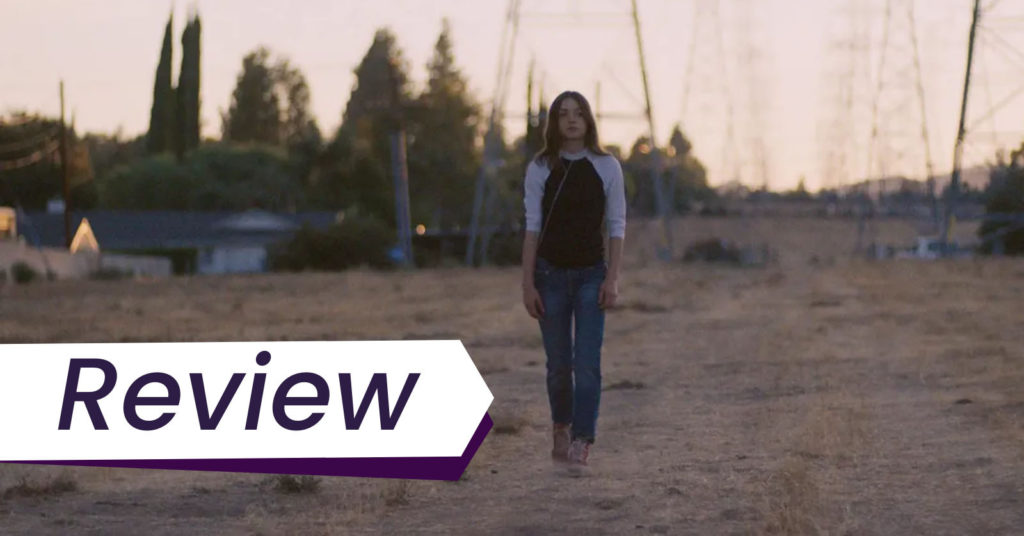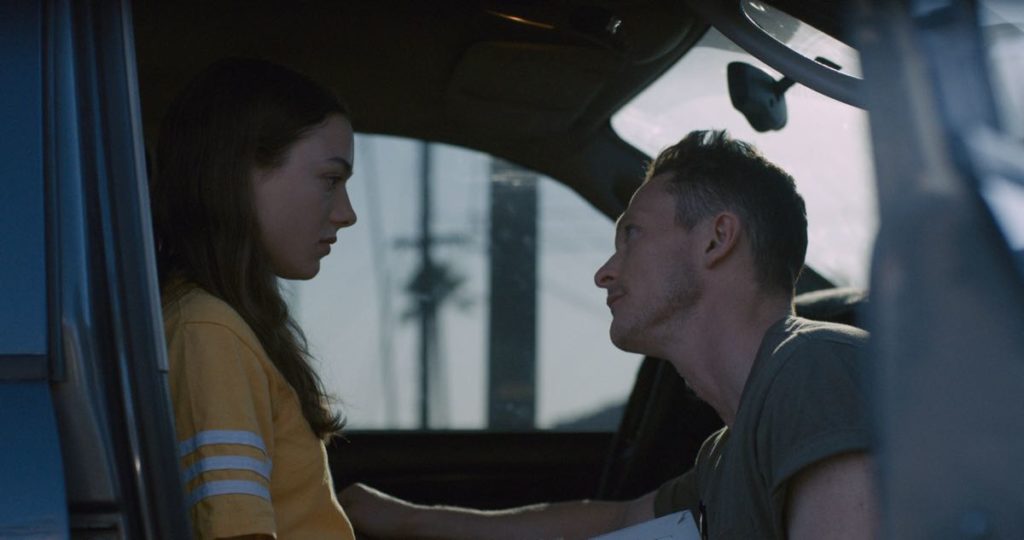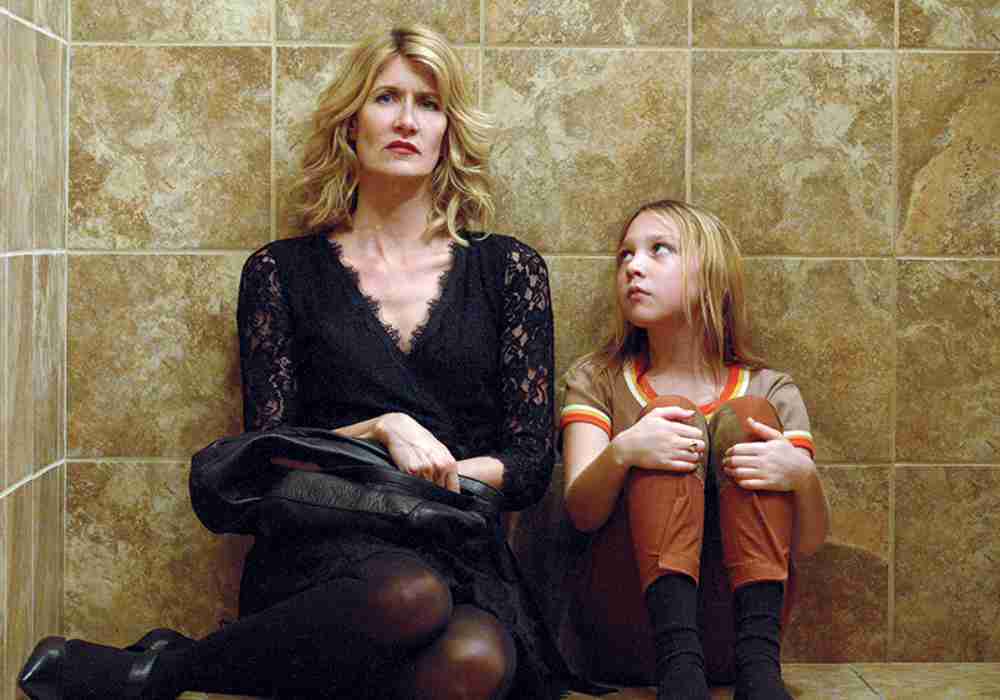Jamie Dack’s Palm Trees and Power Lines finds a film language to depict sexual assault and coercion in a way that keeps us emotionally involved with our heroine, without reveling in the horrors of the abuse.

Discover one film you didn’t know you needed:
Not in the zeitgeist. Not pushed by streamers.
But still easy to find — and worth sitting with.
And a guide to help you do just that.
Last year on the Seventh Row podcast, we went deep on depictions of childhood sexual assault in Una, The Tale, and Slalom, and the challenges of depicting this issue sensitively and thoughtfully. With the exception of The Tale, most films falter in some way, often ending up romanticising an assault unintentionally: even if the filmmaker otherwise makes it clear that this was rape, they may follow some of the conventions of how sex scenes are written and shot, which can lead to unintended implications. Slalom and Una are both wonderful thoughtful films, but are not without their issues. Palm Trees and Power Lines is a welcome addition to this canon, especially for how it finds a film language to depict sexual assault and coercion in a way that keeps us emotionally involved with our heroine, without revelling in the horrors of the abuse.
Writer-director Jamie Dack’s feature debut, Palm Trees and Power Lines, follows seventeen-year-old Lea (an impressive Lily McInerney, also making her feature debut) over one summer when she’s bored and feeling at sea. Fustrated with her indifferent mother (Gretchen Mol) who clings when she’s lonely and disappears just as frequently, Lea proves easy prey when an older man takes an interest in her. Like Rönkkö in fellow Sundance film Girl Picture, heterosexual sex for Lea is pretty disappointing. An early scene in the film finds her having sex in the backseat of a car, the boy’s face unseen and largely out of frame. As he grunts with pleasure, a closeup of Lea reveals she’s barely even enjoying it. By the time he asks her if it’s good, he’s finished, sitting up, throwing the condom out the window, and more concerned with her getting out of his personal space than making sure she had a good time. As soon as they leave the car and return to their friends, he ignores her.
When neglect and indifference are the norms in Lea’s life, she becomes easy prey for a thirty-five-year-old man, Tom (a creepily restrained and wonderful Jonathan Tucker) who shows her a bit of warmth and kindness en route to grooming her. There’s a practiced smoothness to Tom’s pursuit of Lea: he’s creepy, but he’s careful to remain as seemingly upstanding as possible. When he helps her out of some trouble and offers her a lift home, which she refuses (as she repeats, you don’t ride with strangers), he charmingly follows her along her walk in his car at a slow speed. He cranks the radio, trying to find music that will please her. It’s all harmless… ish. Except at the end of this, he’ll know where she lives. A bit of charm is enough to persuade her to hop in the car with him for the ride, as she jokingly commands, “Don’t murder me.”

His boyish charm and good manners repeatedly persuade Lea to do things that she’s not entirely sure she wants to do. He lets her make the first move sexually, which gives her the illusion of control. But when she asks him to take her to his home, she is visibly uncomfortable, hanging by the door, body language closed. Instead of realising that this is pedophilic behaviour and taking her home, he gives her alcohol, and does everything he can to put her at her ease, which is code for coerce her into believing it was her idea to have sex with him, when in fact he rapes her.
The way Dack shoots these scenes of abuse feels novel and smart: things play out in wide shot, where we’re far enough away that we can’t quite see the details of body parts and touching. Cinematographer Chananun Chotrungro, who shot another film about sexually abused women (The Third Wife), makes these scenes almost seedy in the blandness of the lighting. There’s no soft light or soft focus, just the harsh room lights and sometimes grainy darkness, and an objective remove that forces us to stand back and think about how uncomfortable we are with what is happening.
Throughout the film, when Chotrungro gets close to Lea, she focuses in on McInerney’s face, while the people around her only intrude in the frame. We see this in early scenes with Lea’s mother, whose face we don’t see until minutes after she’s introduced, and again when Lea is in sexually coercive situations. That’s not to say that there aren’t moments of beauty in the film. But Chotrungro and Dack wisely keep the wide shots of beautiful palm-tree lined streets, primarily to scenes when Lea is either alone or with her best friend. There are some stunning frames, but not necessarily romantic ones.
While Una, The Tale, and Slalom all looked at characters not just in the middle of abuse but coming out of it — or reflecting on it — Palm Trees and Power Lines is purely about the descent deeper and deeper into it. That makes for bleak and sometimes frustrating viewing. Did Tom really need to be quite so villainous? The film takes great pains to make him not just a rapist — if that weren’t bad enough — but a serial pimp for under-aged girls. Is it not bad enough that he is knowingly entering into a ‘relationship’ with a seventeen-year-old girl?
At the same time, the film ends before we can really see the full consequences of Tom’s grooming of Lea, and before she can become self-aware. For a film that’s so interested in exploring what she does and does not consent to — under coercion and control, which is always clear — it’s frustrating that we don’t really get to see her coping with what’s happened. It makes the film feel a bit like one of those Sundance films that ran out of run time. But I’m not sure where there is to go because Dack has never established Lea as someone with skills or interests or desires. That’s partly why she’s good prey for Tom, but it also makes her feel like not quite a full character.
You could be missing out on opportunities to watch great films like Jamie Dack’s Palm Trees and Power Lines at virtual cinemas, VOD, and festivals.
Subscribe to the Seventh Row newsletter to stay in the know.
Subscribers to our newsletter get an email every Friday which details great new streaming options in Canada, the US, and the UK.
Click here to subscribe to the Seventh Row newsletter.




